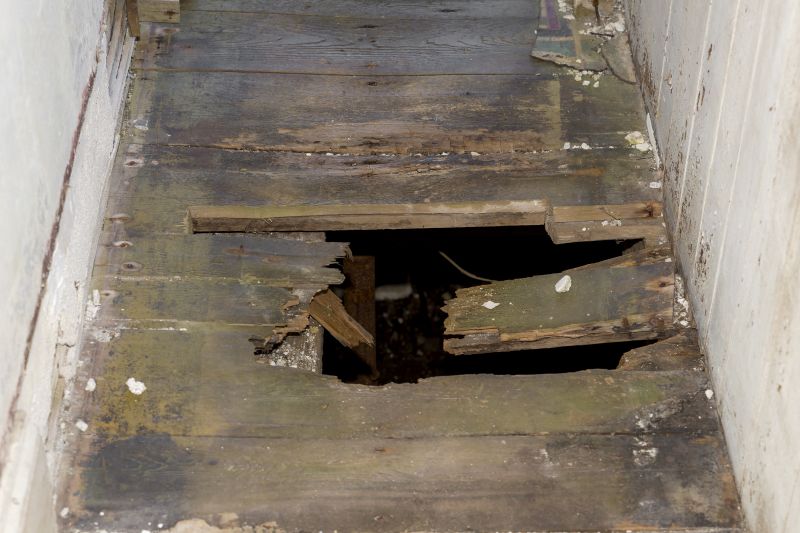Ultimate Guide to Rotted Wood Repair Products for DIYers
Discover essential tools and materials that empower you to tackle rotted wood repairs with confidence and professional results.
 Rotted wood can pose significant challenges in maintaining the integrity and appearance of wooden structures, whether they are part of a home, fence, or outdoor furniture. Addressing wood rot effectively requires selecting appropriate repair products that can restore strength, prevent further decay, and blend seamlessly with existing wood. There are various solutions designed to penetrate, fill, and reinforce compromised wood, each suited for different levels of damage and types of wood surfaces. Proper identification of the extent of rot and choosing the right product type are essential steps in ensuring a durable and lasting repair.
Rotted wood can pose significant challenges in maintaining the integrity and appearance of wooden structures, whether they are part of a home, fence, or outdoor furniture. Addressing wood rot effectively requires selecting appropriate repair products that can restore strength, prevent further decay, and blend seamlessly with existing wood. There are various solutions designed to penetrate, fill, and reinforce compromised wood, each suited for different levels of damage and types of wood surfaces. Proper identification of the extent of rot and choosing the right product type are essential steps in ensuring a durable and lasting repair.
Top Overall Option
Wood Repair Epoxy System
A versatile epoxy-based repair system that penetrates deeply into rotted wood, providing a strong, durable bond. It is suitable for filling large holes, rebuilding missing sections, and restoring structural integrity. Its ease of use and excellent adhesion make it a popular choice for both professional and DIY repairs, offering a long-lasting solution for various wood rot issues.
Types of Products For Rotted Wood Repairs
Wood Hardener
Penetrates decayed wood to stabilize and strengthen remaining fibers, preparing the surface for further repair or finishing.
Epoxy Wood Filler
A two-part compound used to fill gaps, holes, and rebuild missing wood sections with high durability.
Polyurethane Wood Filler
Flexible filler suitable for filling and repairing wood surfaces with good adhesion and weather resistance.
Wood Patch Repair Kit
Complete kits that include fillers, hardeners, and applicators for quick and easy repairs of minor rot.
Exterior Wood Sealant
Protects repaired wood from moisture and environmental damage, extending the life of the repair.
Rot Repair Putty
A malleable compound ideal for filling small holes and surface imperfections caused by rot.
Wood Restoration Compound
Designed to restore the appearance of damaged wood surfaces, blending repairs seamlessly.
Quick-Dry Wood Filler
Fast-curing filler suitable for quick repairs on minor rot and surface damage.
Moisture-Resistant Wood Repair Paste
Ideal for repairs exposed to high humidity or outdoor conditions, providing a water-resistant finish.
Structural Wood Epoxy
Heavy-duty epoxy formulated for structural reinforcement and rebuilding large damaged sections.
Wood Preservative
Prevents future decay by treating wood before or after repairs, extending the lifespan of the structure.
Flexible Wood Filler
Allows for movement and expansion, suitable for repairing outdoor furniture and decks.
Cure & Seal Coating
Provides a protective layer over repaired wood, sealing in repairs and preventing moisture ingress.
Popular Choices
Widely used for stabilizing decayed wood before filling or sealing.
Commonly selected for its strength and versatility in repairing various sizes of rot.
Popular for its flexibility and weather resistance in outdoor repairs.
Frequently chosen for protecting repaired wood from moisture and environmental damage.
A go-to for small surface repairs and filling minor holes caused by rot.
Favored for fast repairs and minimal downtime during restoration projects.
Chosen for structural repairs where strength and durability are critical.
Ideal for outdoor applications and areas with high humidity.
Commonly used for pre-treatment to prevent future rot and decay.
Repairing rotted wood often begins with cleaning and removing any loose or decayed material. Applying a wood hardener can stabilize remaining wood fibers, creating a solid foundation for subsequent repairs. Fillers and epoxy compounds are commonly used to fill holes and rebuild missing sections, providing structural support and restoring the surface. For extensive damage, replacement of severely compromised sections might be necessary, but for minor to moderate rot, these repair products can be highly effective.
When selecting products for rotted wood repairs, it is important to consider compatibility with existing wood, ease of application, drying time, and the level of durability required. Proper surface preparation, including cleaning and drying, enhances adhesion and effectiveness. Many repair products are designed for use on exterior wood, offering resistance to moisture and environmental elements. Regular maintenance and inspections can help prevent future rot and extend the lifespan of wooden structures.
Key Buying Considerations
- Type of repair needed: hole filling, structural reinforcement, or surface restoration.
- Extent of wood rot: minor surface damage versus extensive decay requiring more robust solutions.
- Compatibility with existing wood: ensure the repair product adheres well to the type of wood you are working with.
- Application method: consider whether the product is suitable for brush, spatula, or syringe application.
- Drying and curing time: choose products that fit your project timeline.
- Environmental exposure: select weather-resistant or waterproof products for outdoor use.
- Ease of use: look for user-friendly formulations, especially if DIY application is intended.
- Durability and longevity: consider the expected lifespan of the repair based on environmental conditions.
- Color matching: some fillers and compounds can be sanded and stained to match existing wood.
- Surface preparation requirements: clean, dry, and sometimes sand the surface before applying repair products.
- Safety considerations: check for low VOCs and non-toxic formulations if working indoors or in enclosed spaces.
- Cost and availability: balance quality with budget constraints and ease of procurement.
- Compatibility with finishes: ensure that the product can be painted or sealed over if needed.
- Flexibility: for outdoor or moving parts, choose flexible fillers to accommodate expansion and contraction.
This page contains affiliate links. We may earn a commission if you purchase through these links, which helps support our content creation.
